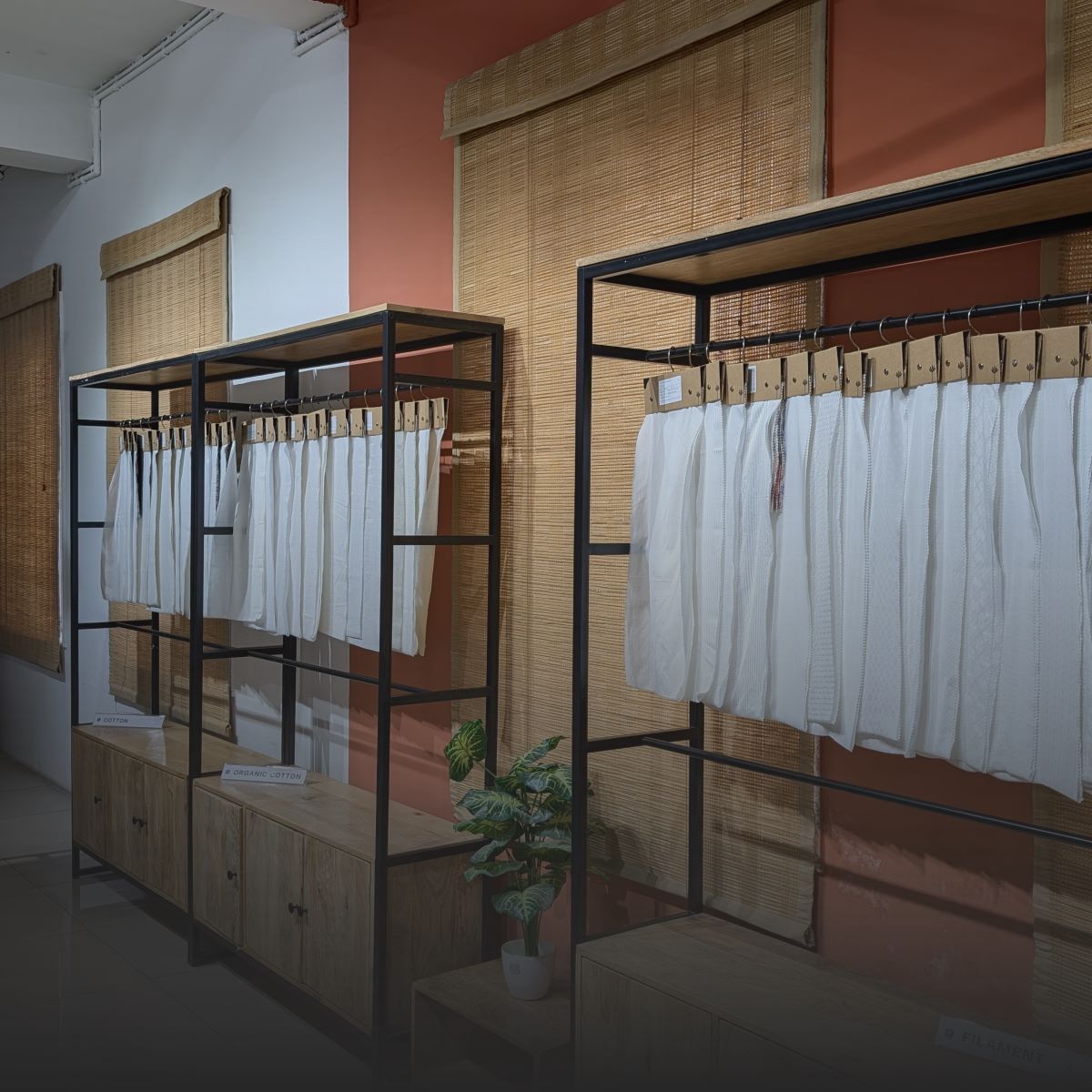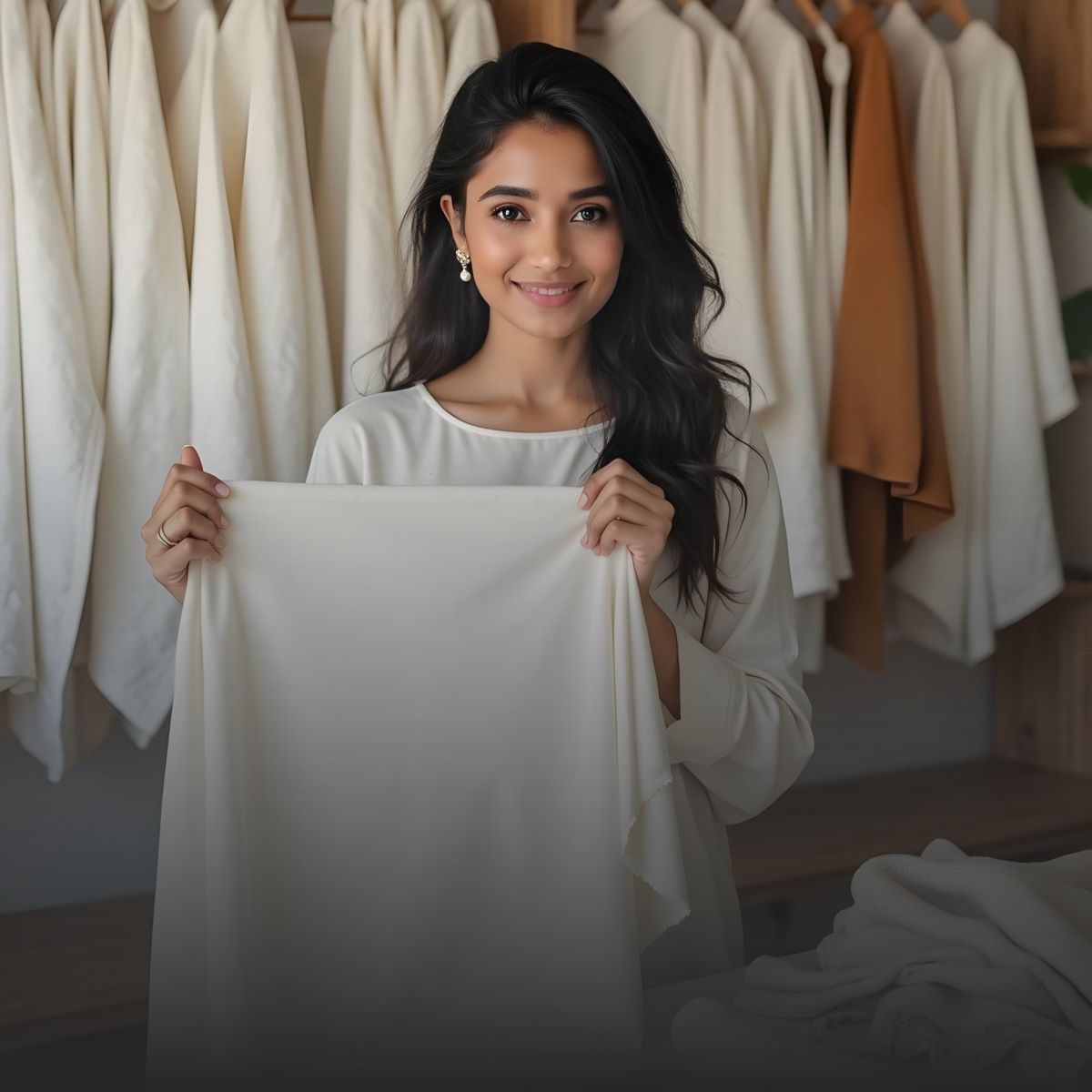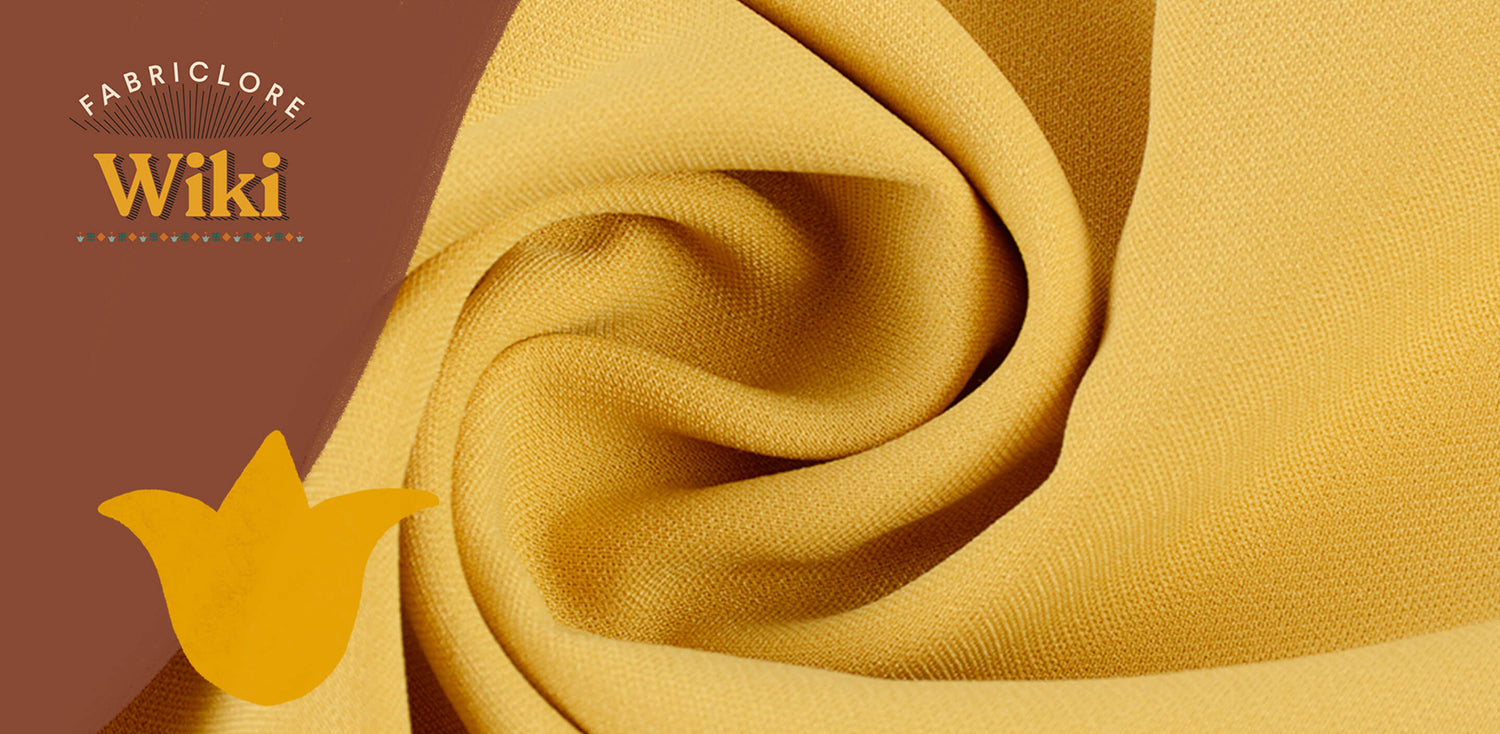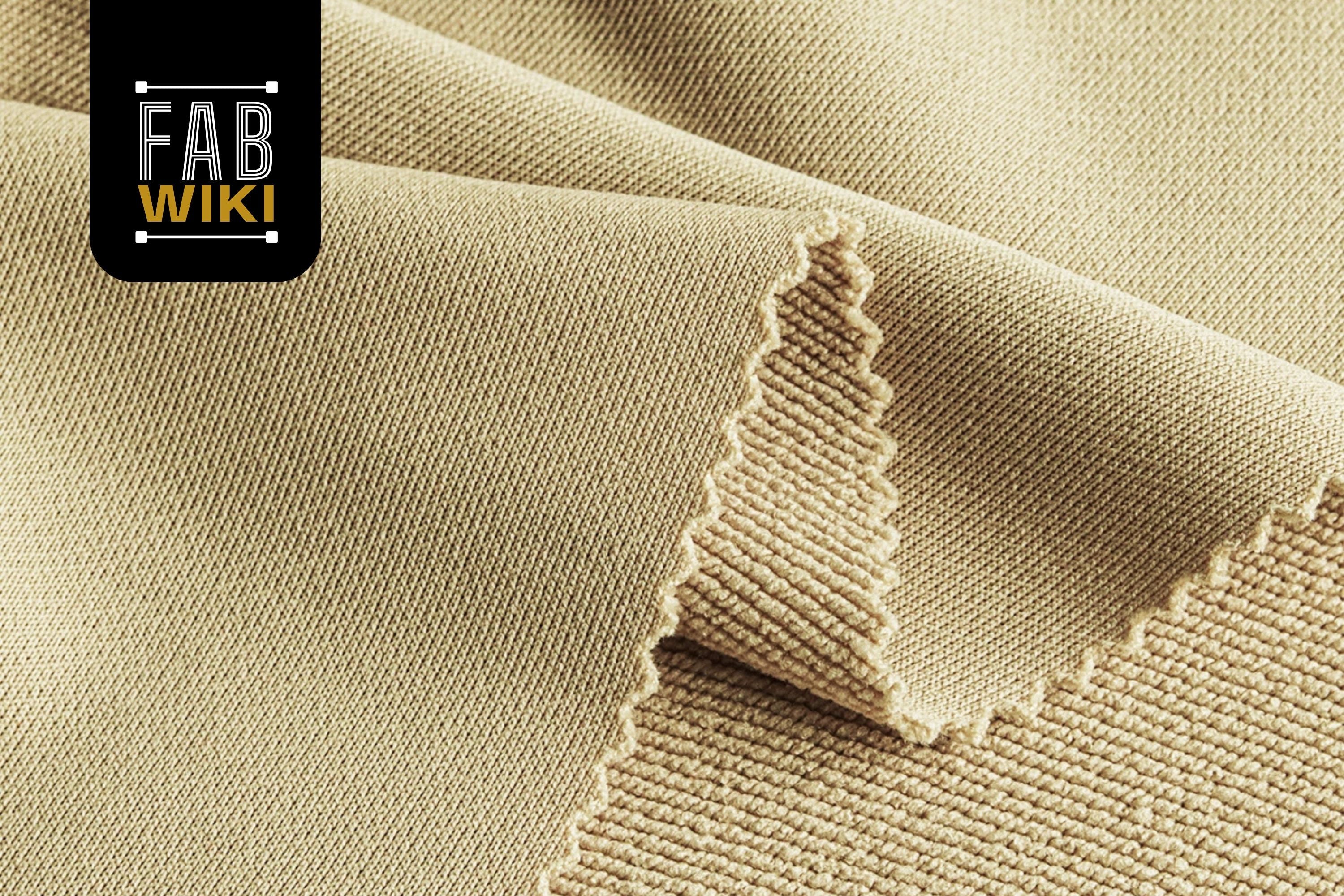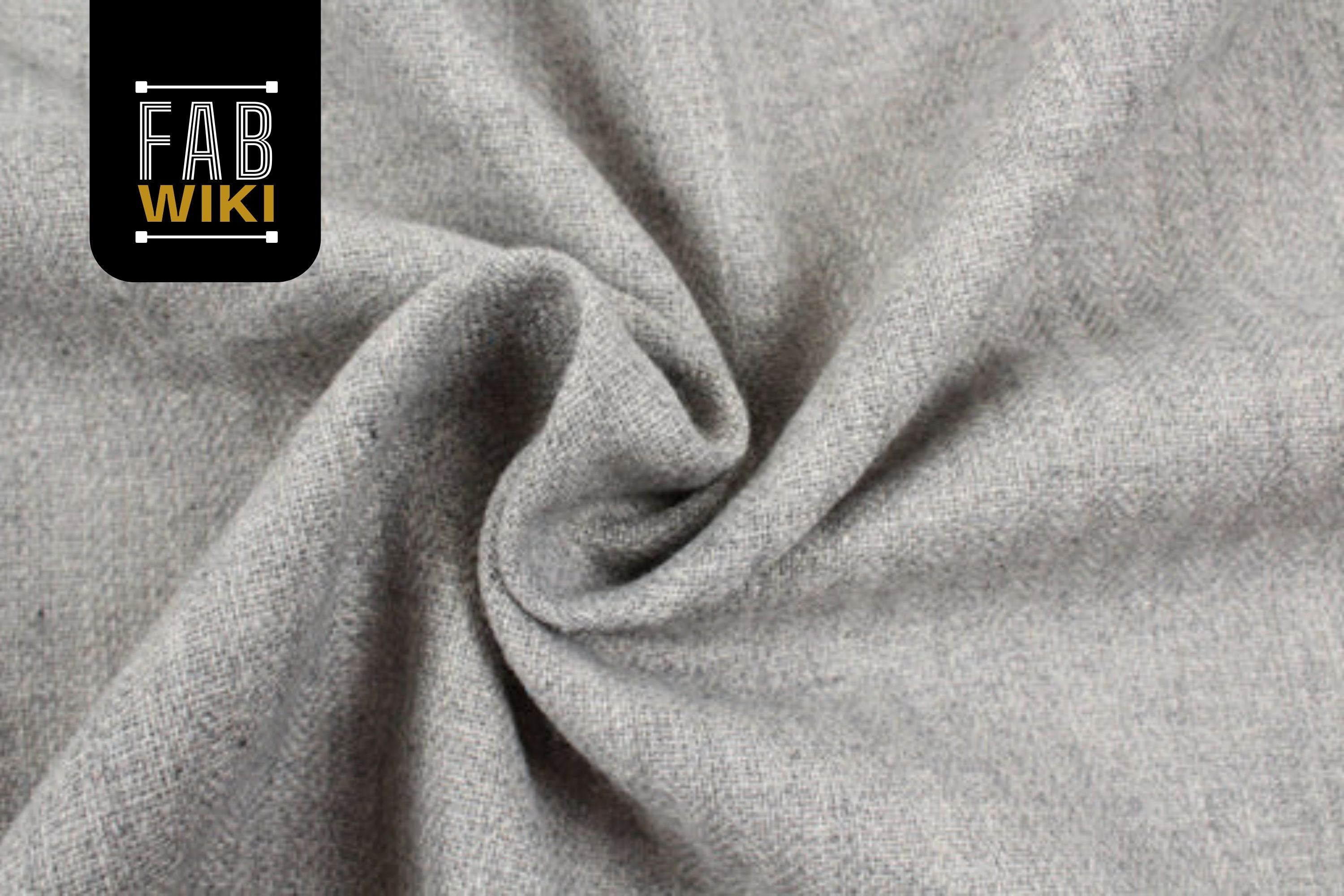Cavalry twill fabric stands at the intersection of heritage durability, military-grade performance, and refined aesthetic appeal. Once used exclusively for cavalry uniforms, it has evolved into a staple for luxury outerwear, tailored trousers, winter suits, structured skirts, uniforms, and premium workwear. Its iconic diagonal ribs, sturdy twill weave, and polished finish make it a favourite among apparel designers, fashion brands, private labels, fabric sourcing teams, and bulk textile buyers.
This guide delivers a deep technical understanding of cavalry twill—covering weave architecture, fiber compositions, GSM ranges, production processes, applications, sourcing checklists, QC parameters, and market trends.
What Is Cavalry Twill Fabric?

Cavalry twill is a strong, durable twill-weave fabric characterised by:
- A pronounced double-diagonal rib pattern
- High abrasion resistance
- Dense, structured hand feel.
- Excellent drape for tailored silhouettes
Traditionally made from wool, today cavalry twill is produced using:
- Wool
- Wool–poly blends
- Cotton
- Viscose blends
- Polyester or nylon blends
- Stretch-enhanced versions with elastane
Its origins trace back to 19th-century military uniforms, where soldiers required fabrics that were:
- Strong
- Weather-resistant
- Wrinkle-minimal
- Shape-retaining
Modern cavalry twill retains the same performance DNA — but with improved finishing techniques that make it more versatile across fashion, workwear, and lifestyle products.
Key Characteristics of Cavalry Twill Fabric

Before exploring deeper, here's a technical overview of what makes cavalry twill distinct. This section is written in paragraph form for stronger SEO engagement.
Cavalry twill stands out due to its signature double twill ribs, which give the surface a raised diagonal pattern. This rib effect not only enhances aesthetics but also adds durability and structure. Unlike ordinary twill, cavalry twill uses stronger yarns and a steeper twill angle, which increases abrasion resistance and creates a denser, more luxurious feel.
Despite its strength, cavalry twill offers a refined drape, making it suitable for premium menswear and womenswear. Its wrinkle resistance, shape retention, and weather tolerance give it a long lifespan—key reasons sourcing teams prefer it for outerwear and uniforms.
Core Functional Properties
|
Property |
Description |
|
Weave Structure |
Steep double twill, visible ribs |
|
Durability |
Very high (stronger than standard twill) |
|
Hand Feel |
Crisp, structured, smooth finish |
|
Stretch Options |
Available in wool-stretch & poly-stretch versions |
|
Breathability |
Moderate to high depending on fibre blend |
|
Weather Resistance |
Good resistance to wind, moderate water resistance with finishing |
|
Drape |
Structured but elegant—ideal for suiting |
|
Aesthetic |
Heritage, luxury, military-inspired |
|
Care |
Fibre-dependent (wool blends often dry-clean) |
Why Cavalry Twill Is Popular Among Fashion Brands

Eyeing premium menswear or sturdy lifestyle collections? Cavalry twill give brands both aesthetic advantage and performance reliability.
Brand & Sourcing Benefits
Brands choose cavalry twill because it has a high-end feel and works well for a long time. It gives clothes a rigid, put-together look without making them less comfortable.
Advantages include:
- Long lifecycle → excellent for premium products.
- Tailored drape → perfect for structured silhouettes.
- High abrasion resistance → ideal for workwear and uniforms.
- Natural warmth (wool variants) → perfect for winter collections.
- Premium identity → aligns with luxury and heritage branding.
- Consistent quality → suitable for bulk production.
For sourcing teams, cavalry twill is often a more cost-effective alternative to pure wool suiting, especially when blended.
Cavalry Twill vs. Similar Fabrics
A comparison helps designers choose the right base for tailored silhouettes.
|
Fabric |
Key Traits |
Best Use |
|
Cavalry Twill |
Double twill ribs, structured, very durable |
Trousers, uniforms, outerwear |
|
Gabardine |
Tight twill, smoother surface |
Suits, trousers, trench coats |
|
Herringbone |
Zig-zag twill pattern |
Jackets, coats, classic menswear |
|
Serge |
Fine twill with softer ribs |
Suits, skirts, dress trousers |
|
Chino Twill |
Lighter twill weave |
Casual trousers, chinos |
Cavalry twill wins for structure + durability + premium appearance, especially for military-inspired silhouettes.
Types of Cavalry Twill Fabric
Cavalry twill today comes in several constructions depending on end use, price point, and performance requirements.
|
Type |
Composition |
Features |
Common Uses |
|
Wool Cavalry Twill |
100% wool |
Warm, durable, premium drape |
Suits, coats |
|
Wool-Poly Blend Cavalry Twill |
Wool + polyester |
Higher durability, cost-effective |
Uniforms, tailored pants |
|
Cotton Cavalry Twill |
100% cotton |
Breathable, casual look |
Workwear, casual trousers |
|
Stretch Cavalry Twill |
Wool/Poly + elastane |
Flexibility, comfort |
Modern suiting, fitted trousers |
|
Polyester Cavalry Twill |
100% synthetic |
Extremely durable, budget-friendly |
Workwear, uniforms |
GSM / Weight Guidance for Cavalry Twill
The drape, warmth, and suitability of a clothing category are all determined by its weight.
|
GSM Range |
Description |
Ideal Use |
|
220–280 GSM |
Lightweight cavalry twill |
Summer trousers, skirts |
|
280–350 GSM |
Standard suiting weight |
Formal trousers, uniforms |
|
350–450 GSM |
Heavy cavalry twill |
Coats, jackets, winter trousers |
Pro Tip: Wool blends above 350 GSM produce the most durable outerwear and premium winter trousers.
How Cavalry Twill Is Made – Technical Manufacturing Process

To evaluate mills or suppliers, sourcing teams must understand the technical steps.
1. Picking the Fibre
Wool, cotton, polyester, viscose, or mixes are picked based on how well they work.
2. Making yarn
To get a clean, smooth finish, wool yarns are often made with worsted yarns.
3. Making twill
Specialised loom settings are used to make a steep, double-twill frame.
In this step, we define:
- Rib slant
- Between ribs
- Strength of fabric
4. Putting an end to treatments
Finishing varies on the type of fibre.
|
Finish |
Purpose |
|
Decatising |
Stabilizes wool |
|
Wrinkle-resist finish |
Improves performance |
|
Mercerization (cotton) |
Enhances strength & lustre |
|
Water-repellent finish |
For outerwear |
|
Softening or brushing |
Adds comfort to heavy twills |
5. Quality Control
Checked for:
- Twill uniformity
- Rib angle consistency
- GSM accuracy
- Seam strength
Applications of Cavalry Twill Across Categories
Cavalry twill's structure makes it ideal for professional, winter, and heritage-inspired categories.
|
Category |
Recommended Variant |
Why It Works |
|
Formal Trousers |
Wool or wool-poly twill |
Structured drape, crease retention |
|
Uniforms |
Poly-wool or poly twill |
High durability & wrinkle resistance |
|
Outerwear |
Heavy wool cavalry twill |
Warmth + strong shape |
|
Workwear |
Cotton/poly twill |
Abrasion resistance |
|
Skirts |
Medium GSM twill |
Structured silhouette |
Dyeing, Printing & Customisation Options
Cavalry twill fabric offers a broad scope for customisation, allowing brands to fine-tune both performance and aesthetics based on seasonal collections, uniform requirements, and tailored apparel needs. Since cavalry twill is produced in multiple fibre compositions—wool, cotton, polyester, viscose blends, and stretch blends—the dyeing method varies according to the fibre behaviour. This guarantees even colour effects, colour that lasts, and longer fabric durability.
Dyeing Methods (Fibre-Specific):
- Wool: Best processed with acid dyes or vat dyes to achieve deep, rich colours with excellent wash resistance.
- Cotton: Uses reactive dyes, which provide bright colours, strong bonding, and high fastness.
- Polyester: Requires disperse dyes, designed to penetrate synthetic fibres uniformly.
- Blended fabrics: Often dyed using dual methods to ensure both fibres in the blend absorb colour evenly.
Beyond dyeing, cavalry twill can be refined through a range of customisation options that support brand identity, performance enhancement, and premium finishing.
Some customisation options are:
- Unique GSM: You can change the weight of the fabric to make it fit pants, coats, uniforms or suits.
- Change the angle of the twill: Change how steep the ribs are to get the shape and structure you want.
- How to Match Pantone Colours: Makes sure that brand colours are correct and that big orders are all the same.
- Change in Stretch Percentage: For comfort and ease of movement, add spandex.
With these choices, fashion brands, companies that make uniforms, and private labels can make fabrics that are great for their design goals and production needs.
Sourcing Cavalry Twill – Step-by-Step Guide for Buyers

Sourcing cavalry twill for mass production or premium collections requires a methodical approach. Since this fabric is used for structured garments—suits, jackets, uniforms, trousers—precision in specifications and QC is essential. Below is a professional sourcing workflow followed by global brands to ensure fabric reliability, consistency, and cost efficiency.
Step 1: Define Technical Specifications
Begin with a clear fabric brief that outlines all performance and aesthetic requirements. This reduces back-and-forth with suppliers and ensures accurate sampling.
Your specification should include:
- Fibre blend (wool, cotton, poly-wool, stretch blend).
- GSM (weight range depending on garment category).
- Twill angle and rib definition.
- Desired finishes (wrinkle-resist, water-repellent, softening, decatising).
- Colour or Pantone codes.
- Final end-use (trousers, coats, uniforms, skirts).
Step 2: Request Fabric Swatches
Once the details are known, ask for swatches to check out the main features. A test run makes sure the fabric lives up to the design standards.
Search the colours for:
- Hand feel: Smoothness, surface finish, density.
- Twill rib clarity: Sharpness of the diagonal pattern.
- Draping behaviour: How the fabric falls in movement.
- Stretch (if applicable): Recovery and flexibility.
Step 3: Approve Lab Tests
Before buying in bulk, lab tests are done to make sure the fabric meets the performance standards. For uniforms, pants and winter clothes, this step is very important.
Important tests are:
- Abrasion resistance
- Wrinkle recovery
- Dimensional stability (shrinkage control)
- Colourfastness to washing, rubbing, and light
- Seam slippage results
Step 4: Confirm MOQ & Lead Times
Different factories and mills have different minimum order amounts. Making this clear early on keeps work from being held up.
Most MOQ values are:
- Standard blends: 300–500 meters
- Small-batch production: 50–100 meters (available with select suppliers)
Step 5: Production & Quality Control
Make sure that all of the fabric's parameters match the accepted swatches while it is being woven and finished.
Checkpoints for QC:
- Uniform, consistent twill lines
- No bowing or skewing across fabric width
- Even dye penetration and colour saturation.
- Accurate GSM within tolerance range
Step 6: Final Delivery & Inspection
After the bulk fabric is shipped, do one last roll check before sewing.
Look out for:
- GSM consistency
- Colour matching with the approved standard
- Twill rib uniformity
- Any weaving or finishing defects
This structured sourcing process makes sure that your cavalry twill fabric stays true to brand standards while reducing the risk of production problems, cost overruns, and poor quality.
Common Challenges & Solutions
|
Challenge |
Reason |
Solution |
|
Twill distortion |
Incorrect tension during weaving |
Need tighter loom control |
|
Colour variation |
Fibre blend inconsistencies |
Use same-lot dyeing |
|
Pilling |
Poor fibre quality |
Choose long-staple wool or high-grade polyester |
|
Shrinkage |
Wool content |
Pre-shrinking & finishing |
Care Instructions
- Dry cleaning is recommended for wool-based cavalry twill.
- The machine wash mild for cotton/poly variants.
- Avoid high heat.
- Steam irons work best.
Final Thoughts
The best choice for designers and buyers who need strength, structure, and luxury aesthetics in a single cloth is still cavalry twill. It can be used for tailored clothes, suits, and winter collections, which is why high-end brands always use it. If you buy cavalry twill fabric from the right fabric sourcing platform like Fabriclore and follow the right technical guidelines, it will last a long time and look great.
FAQs
1. What Is Cavalry Twill Fabric Used For?
Cavalry twill is commonly used for formal trousers, structured skirts, uniforms, sports jackets, and outerwear. Its double twill ribs and durable weave make it ideal for garments that need structure, strength, and a polished finish.
2. Is Cavalry Twill Good For Trousers?
Yes. Cavalry twill is one of the best fabrics for trousers thanks to its durability, wrinkle resistance, and structured drape. Wool-blend cavalry twill is preferred for premium suiting, while poly-blends are used for uniforms.
3. What Is The Difference Between Twill And Cavalry Twill?
Standard twill has single diagonal lines, while cavalry twill features double, more pronounced ribs. Cavalry twill is thicker, stronger, and more structured—ideal for uniforms and tailored garments.
4. Is Cavalry Twill Suitable For Summer?
Lightweight cavalry twill in the 220–280 GSM range can be used for summer trousers, but traditional wool variants are best for autumn and winter due to their warmth.
5. What Fibres Are Used In Cavalry Twill?
Standard fibres include wool, polyester, viscose, cotton, and elastane blends. Wool blends offer luxury and warmth, while polyester blends enhance durability and cost efficiency.
We also happen to be a magnet for suggestions, and would love to catch yours….throw us yours on hello@fabriclore.com
